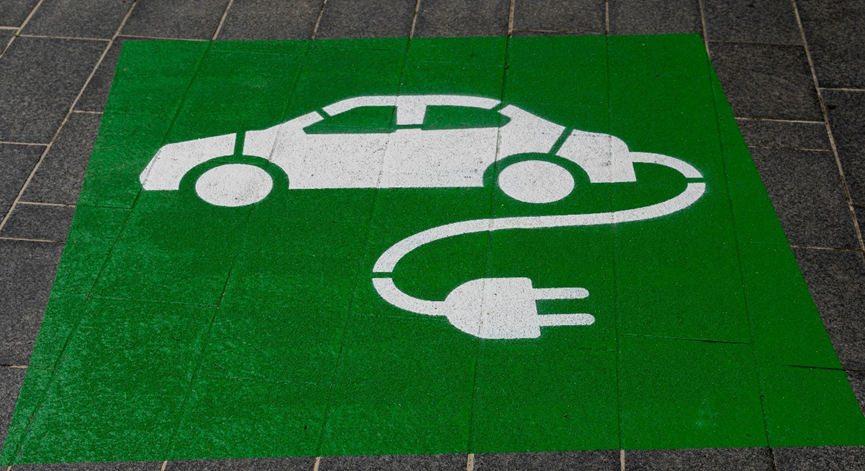The energy transition requires building more electric vehicle charging stations and other infrastructure.
Image source:Michael Marais/Unsplash
Agustin Delgado
Iberdrola's Chief Innovation and Sustainability Officer
To achieve the energy transition, regulators and developers must proactively plan and invest in infrastructure before demand arises.
However, advancing infrastructure development in advance also raises important questions: Who will plan and build it, and who will bear the costs and associated risks?
To support the energy systems of the future, the following ten principles can help global efforts in building energy infrastructure that is "future-proof."
Energy transition is a global responsibility. To achieve this goal, regulators and developers must proactively plan and invest in infrastructure well before demand arises. Without timely development and construction, the deployment of renewable energy and the electrification process could be delayed, potentially leading to increased CO₂ emissions and higher costs for energy consumers.However, advancing infrastructure development in advance has also raised some critical questions: Who will plan and build it? And who will bear the costs and associated risks?Determine infrastructure requirementsAccording to the International Energy Agency (IEA), rapidly reducing carbon dioxide emissions by 2030 can primarily rely on three key approaches:1. Solar photovoltaic and wind energy capacity:Global installed capacity should triple to reach 11,000 gigawatts.2. Electric Vehicles (EVs):Electricity consumption in the transportation sector should quadruple to reach 8 exajoules.3. Electrification of fossil fuel energy applications:The share of electrification in the economy should increase from the current 20% to 28%.These rapidly growing demands require a stronger grid and a reliable charging network. However, grid infrastructure development often lags behind the expansion of renewable energy and electrification efforts. Renewable energy projects typically take two to five years to complete, while building and connecting electric vehicle charging stations usually takes one to two years. Meanwhile, constructing new transmission lines can be an even more time-consuming process, often requiring five to ten years. Therefore, it’s crucial to ensure adequate grid capacity before installing renewable energy systems or addressing rising electricity demand.Ten principles to support future-proof energy infrastructure investmentsTo guide and support infrastructure investments that drive the energy transition, the following principles can help the world build energy infrastructure "fit for the future," paving the way for tomorrow’s energy systems. These principles are not only applicable to the energy sector—they also amplify the broader social and economic impact of infrastructure investments.1. Planning and PrioritizationInfrastructure development requires a lengthy planning, development, and construction cycle, making proactive planning essential. Developers should create long-term plans spanning at least ten years, engaging the public through consultations to gather insights into the needs of future users—while also aligning with energy, industrial, and environmental objectives. These plans must then prioritize projects further, based on policy goals and their potential socio-economic benefits. Finally, project evaluations should account for the total costs over the asset’s entire lifecycle, including externalities.2. Create reliable demandInfrastructure should be built before future demand emerges. With the backing of clear policy goals and regulatory certainty, predictable and visible demand can foster more effective planning and investment.3. Enhance the efficiency of administrative processesInfrastructure projects often face delays due to lengthy waits for permits and approvals. To address this, administrative processes should be streamlined through digitalization, standardization, and the efficient allocation of public administrative resources—steps that can help reduce the time required for development and construction preparation. Crucially, a proactive iterative learning process is essential: agencies need to experiment with innovative approaches to enhance the efficiency of their administrative workflows.4. Promote financing and capital provisionThe early stages of the energy transition will require substantial funding from both public and private sectors. To encourage these investments at the lowest possible cost, regulatory certainty, compelling business cases, and collaboration among national governments and multilateral banks are essential. Public authorities at all levels—national, regional, and local—must work together synergistically to advance toward a shared vision.5. Focus on Emerging Markets and Developing Economies (EMDEs)Currently, the majority of global energy investments in the clean-tech sector are concentrated in China, Europe, and the United States, accounting for 85% of worldwide clean-energy capital. However, future growth in energy will primarily come from other regions of the world, especially emerging markets. This imbalance in resources and investment should be addressed through international cooperation and technology partnerships.6. Leveraging the Role of State-Owned EnterprisesState-owned enterprises are key players in the energy transition and can influence the economy through their decision-making. As partners in the energy transition, these organizations should align with policy objectives and serve as effective public instruments for shaping and achieving those goals.7. Building resilient infrastructure and supply chainsInfrastructure design should prioritize long-term sustainability and resilience, ensuring high-quality services while minimizing costs over the asset’s lifecycle. Future projects must also account for extreme weather events, which may necessitate upgrades to existing infrastructure. These principles should be applied across all stages of the value chain and supply network—ranging from raw materials to workforce development and beyond. Additionally, mandatory risk assessments and other complementary measures should be integrated into national adaptation plans to ensure that infrastructure is robust enough to withstand climate-related impacts.8. Enhancing Public and Stakeholder EngagementTo optimize infrastructure development and performance, it is essential to involve all stakeholders early on. Public participation and oversight mechanisms can ensure project transparency and foster social acceptance.9. Promote economic and social benefitsInfrastructure development should maximize long-term benefits for society, including economic growth, job creation, and the promotion of social equity—especially within local communities.10. Regular Monitoring and Data SharingAll objectives and contributions of infrastructure development, including their performance and impact, should be closely monitored. The involvement of impartial entities plays a critical role in this process. Sufficient data should be made publicly available to ensure accountability and help improve future projects.Ultimately, a critical question remains: how can we fairly allocate the investment risks between the public and private sectors before demand even emerges? Striking the right balance is essential for fostering an energy system that is both resilient and forward-thinking. Yet, how to tackle this challenge still requires careful discussion—and ongoing collaboration and innovation are absolutely vital.
The above content solely represents the author's personal views.This article is translated from the World Economic Forum's Agenda blog; the Chinese version is for reference purposes only.Feel free to share this on WeChat Moments; please leave a comment below the post if you’d like to republish.
Translated by: Sun Qian | Edited by: Wang Can
The World Economic Forum is an independent and neutral platform dedicated to bringing together diverse perspectives to discuss critical global, regional, and industry-specific issues.
Follow us on Weibo, WeChat Video Accounts, Douyin, and Xiaohongshu!
"World Economic Forum"





